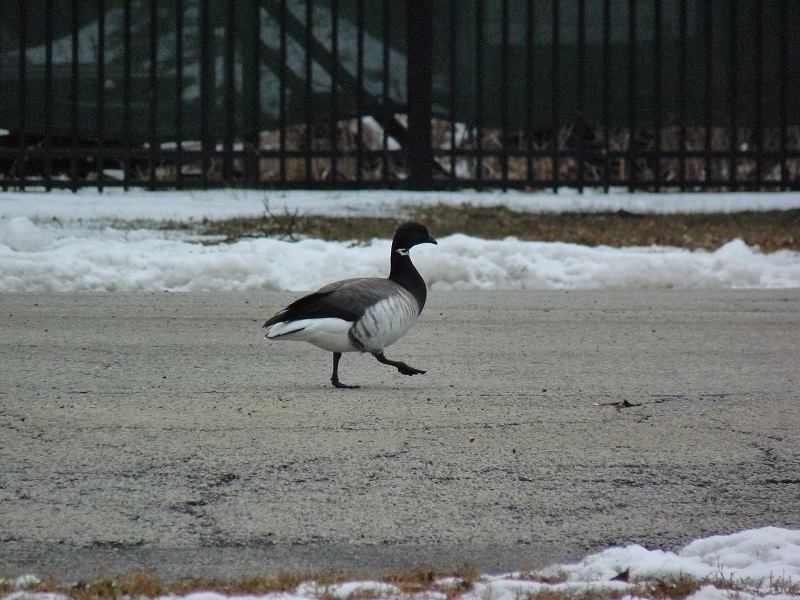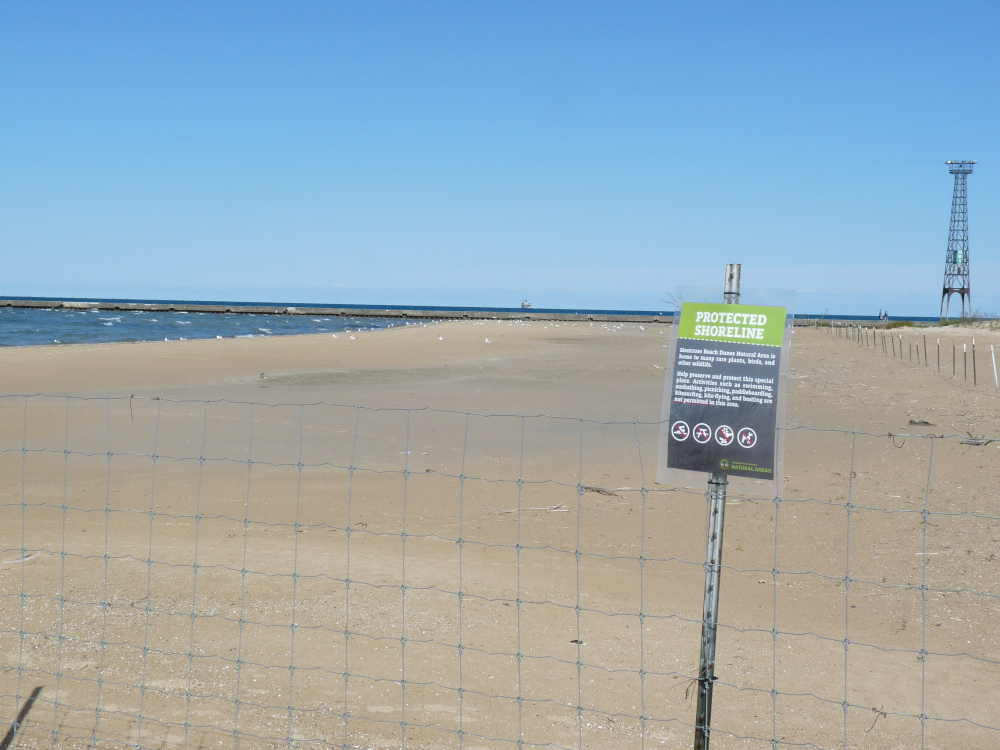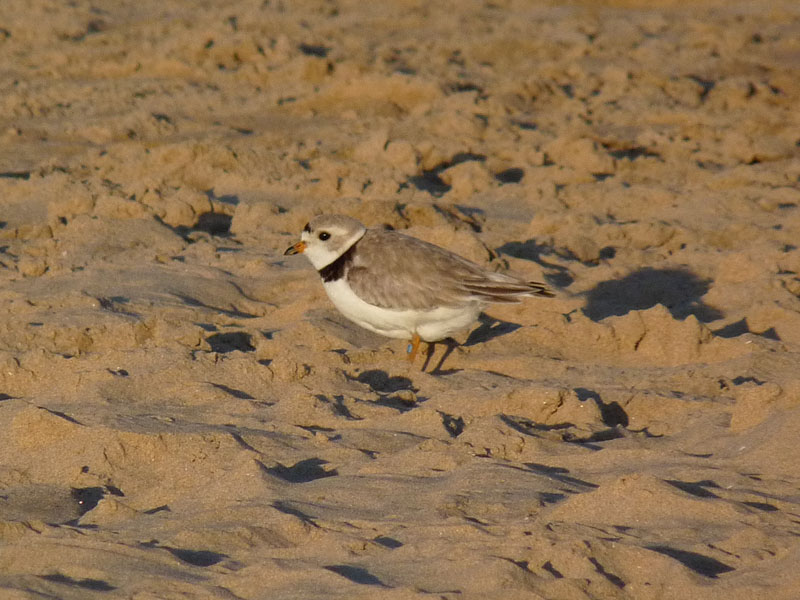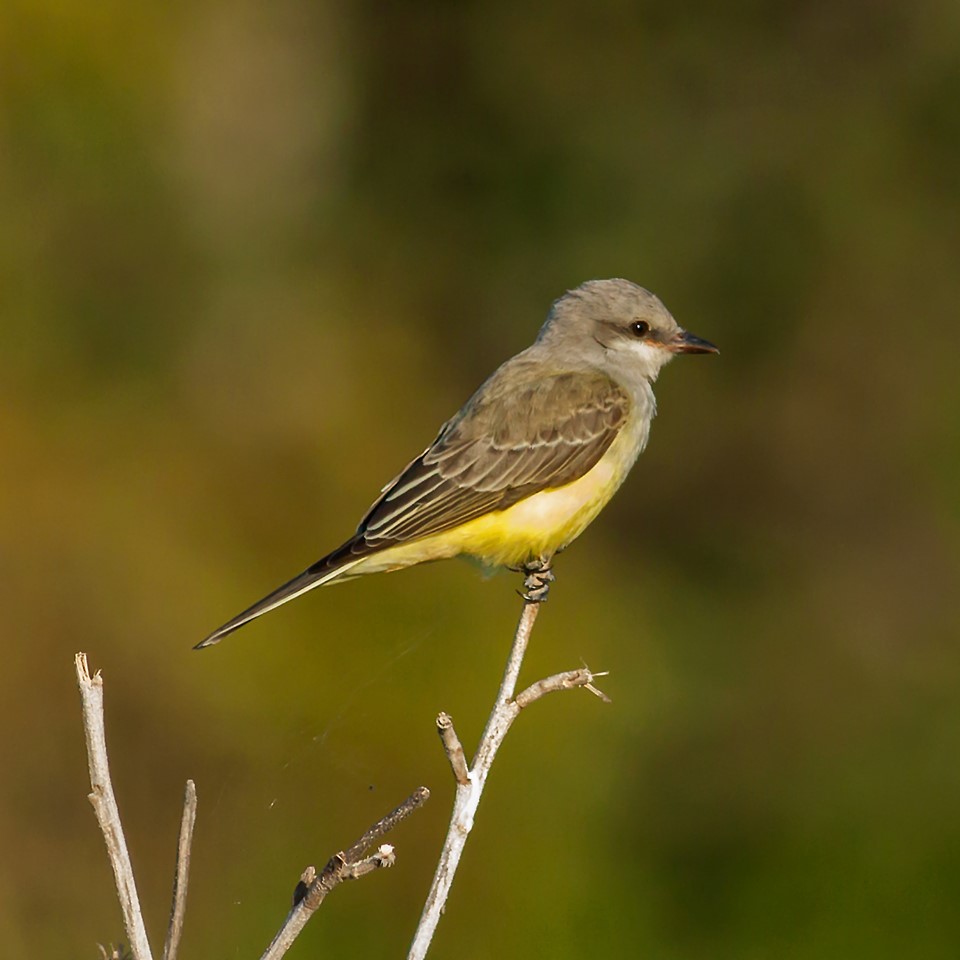I’ve decided not to post any more owl photos online, including this blog, social media, and eBird. Doing so only encourages others to photograph and possibly disturb them, and maybe even tip people off about their location. I made this decision after watching how photographers behaved towards the Long-eared Owls that wintered at Montrose in 2022/2023. Once word of these birds got out, photographers set up just feet from where the Long-eareds were roosting. This caused the owls to move to another, more secluded area or leave altogether. I admit that I’ve been part of the problem by posting my owl photos on the internet, but I won’t do it anymore. We’re not just birders and photographers. We’re also conservationists, and a decent consideration of the welfare of these birds should take precedence over the attention we get from posting our photos on Facebook and other platforms. The internet is full of owl photos. It doesn’t need more.
Category Archives: Opinion
All That Fencing and Roping
If you’ve been to Montrose you’ve probably noticed the fencing and roping on the beach and in the Dunes and Montrose Point Bird Sanctuary. The fencing and roping are there for a good reason – to protect the natural areas from potentially harmful human activity. For example, the Dunes are home to unusual and fragile plants that are easily trampled. Montrose is a wonderful natural area but it’s also popular with joggers, dog walkers, birders and others. If these areas weren’t cordoned off they would be overrun with people who could, unintentionally, harm the nature that makes Montrose so special. Not being able to access these areas is an inconvenience to birders, but the protection gives the plants and animals a chance to thrive and feel safe.
Montrose Piping Plovers – Are They Worth It?
For the third consecutive year, Monty and Rose, our famous Piping Plover couple, nested and raised a family. This is an enormous conservation success story by any measure, the first time Piping Plovers have nested in Chicago in over 50 years.
The wide sandy beach at Montrose is near perfect Piping Plover habitat, but Montrose is far from ideal as a nesting location. Montrose is one of the most popular beaches in Chicago; all that human activity makes life difficult for any bird that nests on the open beach, like Piping Plovers do. The human animals aren’t the only challenge the plovers face. Montrose is also home to several mammalian predators, including Striped Skunks and Racoons, and they aren’t above preying on Piping Plover eggs. In fact, in 2021, a skunk ate some of the eggs from Monty and Rose’s first clutch. As if the mammalian predators weren’t enough, Montrose also hosts Peregrine Falcons, Cooper’s Hawks, Great Blue Herons, and gulls, all capable of dispatching the plovers and their young. With all these threats it’s a miracle Monty and Rose are able to nest and raise a family. The hard truth is that without human involvement the chances of them nesting successfully are small. Part of the beach got fenced off to keep people out in case Monty and Rose decided to nest there in 2021. Like the beach, the Dunes got fenced off to keep people out when Monty and Rose chose to nest there. To protect the eggs form predators, a steel cage was placed over the nest. Even with a cage a determined skunk managed to slip through and pilfer the eggs, forcing Monty and Rose to start over. A new, larger cage prevented this from happening again. To deter avian predators, biologists stationed a trap baited with a live pigeon in the Dunes. On top of all this, a cadre of dedicated volunteers spent hundreds of hours monitoring the plovers.
So the question is, is all this effort worth it? Is all the inconvenience worth it? I led field trips to Montrose in the spring of 2021 and I would take my guests down to the beach and Dunes, where I talked about the nesting Piping Plovers and the efforts to protect them. On one trip a client remarked “All this for a couple little birds?” It’s a legitimate question to ask. I think the answer is a resounding yes. Monty and Rose became celebrities in Chicago, raising awareness of their struggle and the plight of Piping Plovers on the Great Lakes. Their story was mentioned in the news and it became impossible not to sympathize with them. Their story also raised awareness of Montrose and how important it is for wildlife, especially the fragile Dunes.
The story of Monty and Rose is a story of hope and struggle, of people from different backgrounds working together to give a pair of underdogs a fighting chance at raising their kids in a not always hospitable environment. We look forward to their return.
Montrose Interview
I did an online interview about birding Montrose Point for The Uptown Exchange, where I ramble on about how Montrose is the greatest thing since color TV.
Think Flycatchers
We’re always trying to guess what the next new bird for Montrose will be. It’s a fun game to play, though we’re usually wrong with our predictions. Montrose has an impressive 15 species of flycatchers to its credit, including several rare and uncommon species – Western Kingbird (regular), Cassin’s Kingbird (first state record), Say’s Phoebe (several records), and Scissor-tailed Flycatcher (several records). Montrose is clearly an excellent place for Tyrannids, and there are several excellent candidates we should be thinking about as fall approaches. These potentials include
- Gray Kingbird (many extralimital records in the Eastern United States, including three for Illinois)
- Tropical Kingbird (many extralimital records in the Eastern United States, including one for Illinois)
- Fork-tailed Flycatcher (well established pattern of vagrancy in the eastern United States, with several records for Illinois)
- Vermillion Flycatcher (multiple records for Illinois, including one from Lincoln Park)
These are the most likely Tyrannids to show up, but there are a few less likely, though possible species like Variegated Flycatcher (a handful of eastern US records), Sulphur-bellied Flycatcher (a few eastern North American records), Thick-billed Kingbird (a few eastern North American records), and Hammond’s Flycatcher (multiple eastern North American records).
The best way to prepare for vagrants is to keep an open mind about what’s possible and to brush up on field marks for these birds.
Concepts – Relative vs. Absolute Rarities

A relatively rare but still exciting Brant at Montrose Point in Chicago, January 2021. (click to see the larger version)
Birders think a lot about rare birds. More than think about — we obsess over them, drive thousands of miles to chase them, and dream about finding them. But what is a rarity? There are a couple of ways to think about this. Most of the rare birds we see are only regionally unusual, that is, they are common someplace within their range but uncommon outside it. The Brant that showed up at Montrose in early January is a good example of this concept. The world population is in the hundreds of thousands, and they’re common on their wintering grounds from New Jersey to Massachusets on the East Coast. Illinois is outside of their main range and migration route, so it’s a big deal here; when one shows up it generates a lot of excitement in the birding community. Brant is rare enough in Illinois to be on the review list of birds requiring documentation, and Montrose has four or so previous records. Relative rareness doesn’t just include birds outside their normal range, it also includes birds outside of their normal timeframe. A Bay-breasted Warbler in Chicago in December is an example.
The other kind of rarity are birds whose entire population is low. The world population of Kirtland’s Warbler in 2020, for example, was a little under 5,000 birds. That’s not a lot. By comparison, the seating capacity of the bleachers at Wrigley Field is about 5,000. Such small populations are vulnerable to all sorts of disturbances. This class has a handful of species, most of which are on the Endangered Species List. Of these, a few have been recorded in Illinois, including Kirtland’s Warbler, and recent records of Whooping Crane and Red-cockaded Woodpecker.



